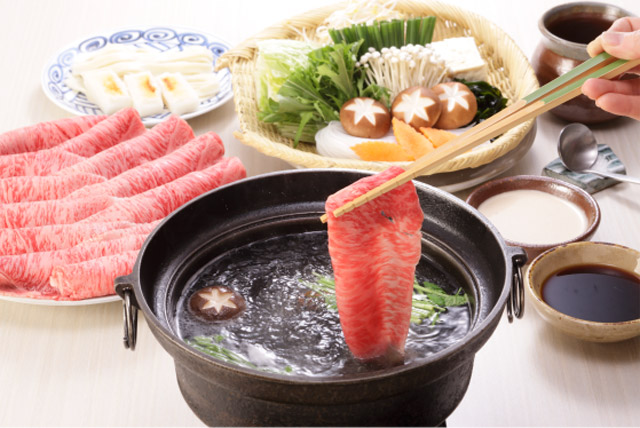In olden times, the roads of Japan had way stations called "kisoji," where weary travelers could rest.
This is why we took the name "Kisoji": we would like to be a place where our customers can find rest, just like in the past.
The rooms in our restaurants are named after places and mountains where kisoji were found.
At Kisoji, you can enjoy our choice beef with a sesame dipping sauce called 'gomadare.' Gomadare sauce makes beef even more delicious. We make our gomadare according to our own special recipe, so please give it a try. Here at Kisoji, we invite you to savor authentic Japanese culture through our cuisine, service, and ambience.

Originally from northern China, shabu-shabu is a delicious dish that has become distinctively Japanese.
Thanks to its tasty flavor, this style of cooking quickly became popular throughout Japan.
The secret behind the tasty flavor of shabu-shabu is gomadare, a sesame-based dipping sauce. Our gomadare is made with more than ten different spices, all carefully selected and blended. If you like the taste of sesame, we're sure you'll love our gomadare sauce.
In Japan, mochi(rice cake) have been a tremendously popular food since olden days.
Mochi is made from 'mochigome'(mochi rice), a variety very similar to the rice used as a staple food in Japan.
The rice is pounded into paste and molded into the desired shape. In Japan it is traditionally made in a ceremony called 'mochitsuki'.
While also eaten year-round, mochi is a traditional food for the Japanese New Year and is commonly sold and eaten during that time.
Kishimen is a broad and flat noodle and is a specialty dish in Aichi Prefecture.
The flat noodles produced in the area were known as the local specialty since the early Edo Period.
The kishimen ingredients are water, flour and salt, yet the noodle becomes longer as it gets rolled out until it is thin and flat, making it require less time for boiling.
1. First, when the broth comes to a boil, pick up a slice of beef with your chopsticks and swirl it around two or three times in the broth. When the meat turns pale pink, dip it in the sesame sauce and eat it. (If you like garlic and leeks, then add some to the sesame sauce to make it even tastier.)
2. Next, put some fresh vegetables into the broth. Be sure to note that the vegetables take longer to cook. When they're ready, just dip them in the vinegar sauce and enjoy!
(The sesame sauce also goes great with vegetables.)
3. After you've eaten the meat and vegetables, add the kishimen noodles and mochi rice cakes to the broth. When they're soft, take them out and put them into the bowl with a little broth. Soup is even tastier if seasoned with some salt and ground pepper.
If you like, we suggest adding a little of the vinegar sauce along with welsh onions for even more flavor.
*Be careful not to cook the meat too long, or it may become tough and lose its flavor.
*Also, take care not to put too much meat and vegetables into the broth at once.
*Add the kishimen noodles and mochi(rice cakes)only after you've eaten all the meat and vegetables.

Grasp one of the chopsticks in the crotch of your thumb.

Balance the chopstick on your ring finger, gripping it securely with your thumb.

Hold the other chopstick with your thumb and index finger, balancing it on your middle finger. Use your index finger and middle finger to move this chopstick up and down while keeping the first one immobile.
Now you can use chopsticks!